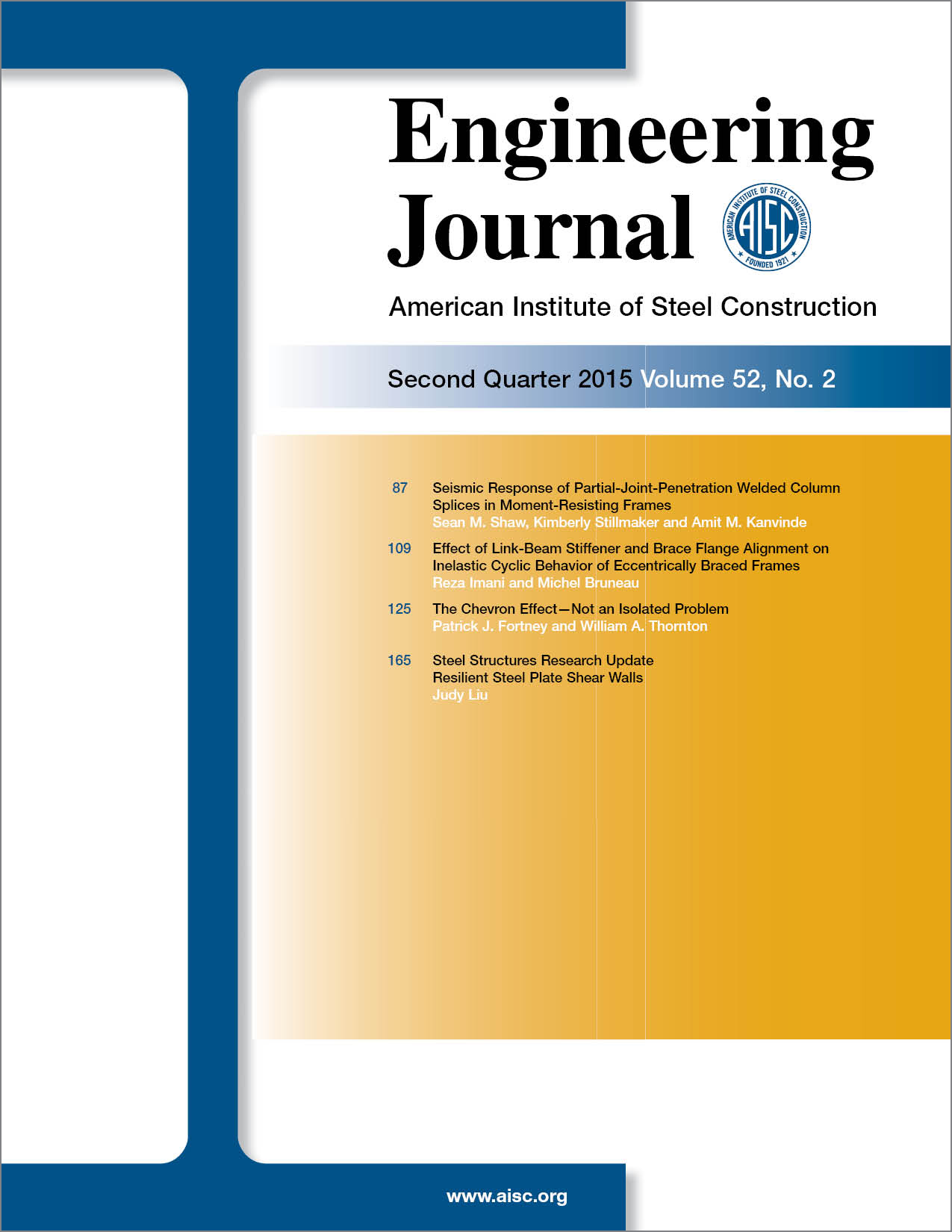Seismic Response of Partial-Joint-Penetration Welded Column Splices in Moment-Resisting Frames
DOI:
https://doi.org/10.62913/engj.v52i2.1082Keywords:
partial-joint-penetration groove welds, PJP welds, column splices, moment framesAbstract
Current standards require that welded column splice connections in special or intermediate moment resisting frames (SMRFs or IMRFs) feature complete-joint-penetration (CJP) groove welds to develop the full flexural strength of the column. CJP welds are often costly, requiring additional material, inspection and labor. Compared to beam-to-column connections, column splices have modest deformation demands. This suggests that perhaps with modern, toughness-rated weld filler materials and welding practices, PJP welded splices may offer acceptable performance under seismic loads. A study featuring five full-scale tests on PJP-welded column splices is presented. The test matrix investigates a range of parameters including column sizes as well as variations in connection details. Specimens were loaded cyclically in a three-point bend configuration subjecting the splice to demands consistent with those in severe earthquakes; a loading protocol was developed specifically for this purpose based on nonlinear time history simulations. All the full-scale specimens exhibited excellent performance. A series of finite element fracture mechanics simulations is also presented to assist with the generalization of test results. The test and simulation data are encouraging from the perspective of adoption of PJP welded splices in IMRFs and SMRFs in seismic regions. Limitations of the research are outlined, along with discussion of future work to develop the concept further.

